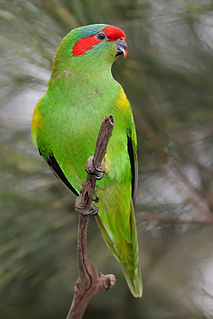
Trematoda is a class of flatworms known as flukes. They are obligate internal parasites with a complex life cycle requiring at least two hosts. The intermediate host, in which asexual reproduction occurs, is usually a snail. The definitive host, where the flukes sexually reproduce, is a vertebrate. Infection by trematodes can cause disease in many types of vertebrates, including mammals, birds, reptiles, and fish.

Pseudemys is a genus of large, herbivorous, freshwater turtles of the eastern United States and adjacent northeast Mexico. They are often referred to as cooters, which stems from kuta, the word for turtle in the Bambara and Malinké languages, brought to America by enslaved people from Africa.

Trematodes are parasitic flatworms of the class Trematoda, specifically parasitic flukes with two suckers: one ventral and the other oral. Trematodes are covered by a tegument, that protects the organism from the environment by providing secretory and absorptive functions.

Echinostoma is a genus of trematodes (flukes), which can infect both humans and other animals. These intestinal flukes have a three-host life cycle with snails or other aquatic organisms as intermediate hosts, and a variety of animals, including humans, as their definitive hosts.

The musk lorikeet is a lorikeet, now the only species in the genus Glossopsitta. It inhabits south-central/eastern Australia. The little lorikeet and the purple-crowned lorikeet were previously included in the genus. The musk lorikeet was first described by ornithologist George Shaw in 1790 as Psittacus concinnus, from a collection in the vicinity of Port Jackson in what is now Sydney. John Latham described it as Psittacus australis. Its specific epithet is the Latin concinna "elegant". Other common names include red-eared lorikeet, and green keet, and formerly a local Sydney indigenous term coolich. The names green leek and king parrot have been incorrectly applied to this species in the past.

The Texas river cooter is a species of freshwater turtle endemic to the U.S. state of Texas. It is found in the river basins of the Brazos, San Bernard, Colorado, Guadalupe, San Antonio, Nueces, and their tributaries. It is one of three species of cooters (Pseudemys) occurring in Texas, including the Rio Grande cooter and the river cooter.

The river cooter is a species of freshwater turtle in the family Emydidae. The species is native to the central and eastern United States.

Nabarleks, are a tiny species of macropod found in northern Australia. They are a shy and nocturnal animal that resides in rocky hollows and forages in the surrounding area. Their diet is grasses, sedges, and ferns found in and around their scrub covered refuges. They are distinguished by a reddish tinge to the mostly grey fur and a distinct stripe at the cheek. They move with great speed and agility when observed, with a forward leaning posture and a bushy tail that arches over the back.

Hypericum concinnum is a species of flowering plant known as gold-wire or goldwire. It is in the St. John's wort family, Hypericaceae. It is the only species in the section Hypericum sect. Concinna.

The eastern river cooter is a subspecies of turtle native to the eastern United States, with a smaller population in the midwest. It is found in freshwater habitats such as rivers, lakes, and ponds.

Cestoda is a class of parasitic worms in the flatworm phylum (Platyhelminthes). Most of the species—and the best-known—are those in the subclass Eucestoda; they are ribbon-like worms as adults, known as tapeworms. Their bodies consist of many similar units known as proglottids—essentially packages of eggs which are regularly shed into the environment to infect other organisms. Species of the other subclass, Cestodaria, are mainly fish infecting parasites.

Paracorixa concinna is a species of water boatman in the family Corixidae. It is found in Europe

Haemaphysalis concinna is a common rodent tick species that originally predominantly occurred in Russia and Eastern Europe, but is also known from Japan, China, Germany and France.
Biremis blandi is a species of marine polychaete worm and the only species in the genus Biremis. It was first described by Polloni, Rowe, and Teal in 1973. The species was discovered in 1971 during a dive by the research submersible DSV Alvin at 635 m (2,083 ft) in the Tongue of the Ocean in the Bahamas. It is named for Alvin pilot Edward L. Bland, Jr., who first observed it.
Stobaera concinna is a species of delphacid planthopper in the family Delphacidae. It is found in the Caribbean, Central America, and North America.

Parodia concinna, the sun cup, is a species of cactus in the genus Parodia, native to southern Brazil and Uruguay. It has gained the Royal Horticultural Society's Award of Garden Merit.
The Amabiliidae are a family of tapeworms. It contains four genera and 23 species.
Tatria azerbaijanica is a species of tapeworm in the family Amabiliidae. It was discovered in Azerbaijan from where it gets its name. It infects the great crested grebe and the little grebe.
Tatria skrjabini is a species of tapeworm in the family Amabiliidae.
Tatria iunii is a species of tapeworm in the family Amabiliidae.













